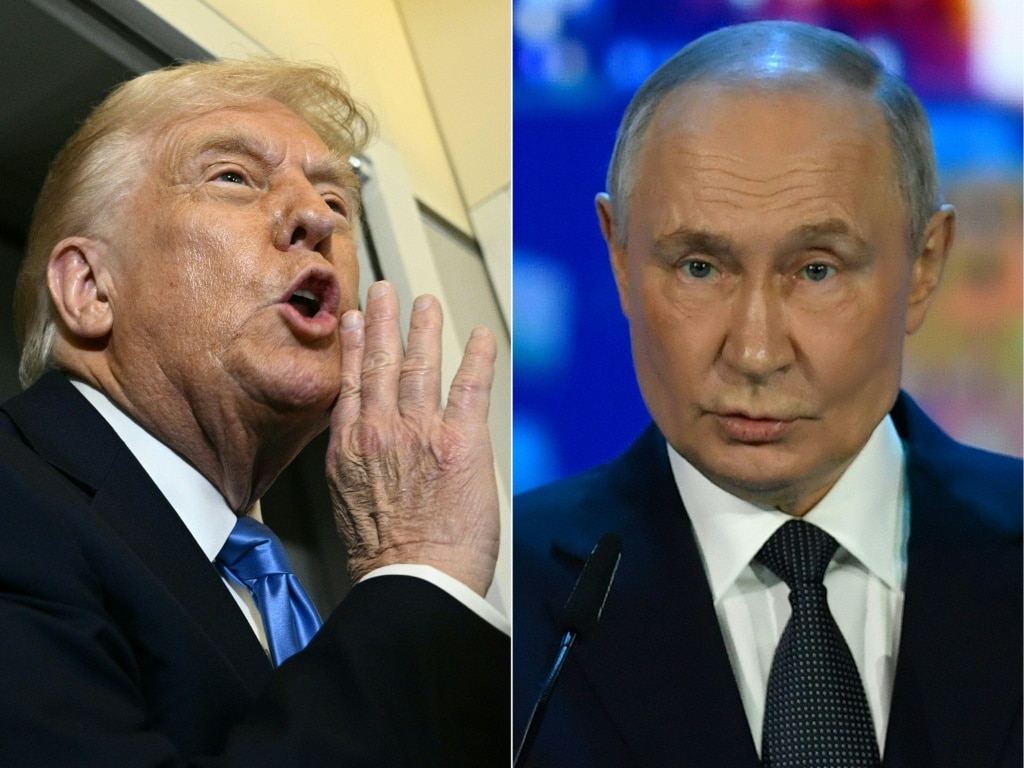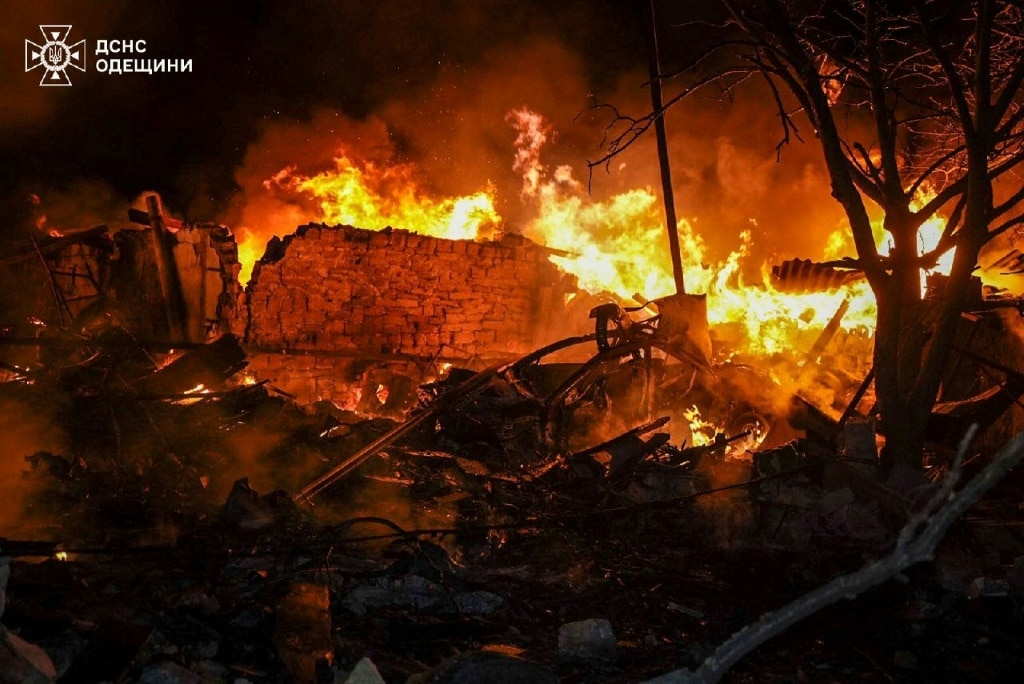Why Vladimir Putin is eyeing a tiny archipelago in the Arctic
The Svalbard archipelago is emerging as a flashpoint in relations between the Kremlin, the US and EU, amid fears Putin could use an attack on the Norwegian territory to test NATO powers.

A remote archipelago in the Arctic is emerging as a flashpoint in relations between the Kremlin, Washington and Europe, amid concerns Vladimir Putin could use an attack on the Norwegian territory to test NATO powers.
Svalbard, a collection of nine islands of glaciers and tundra, is located in the far north of the Arctic Circle, and is officially ruled by Norway after a host of countries, including Australia, ratified a treaty there 105 years ago.
Now the Russian president is escalating tensions in the region, declaring he will deploy extra military to various Arctic bases to defend Moscow’s interests, including valuable mining assets and, increasingly, important sea lanes.
The situation has escalated so much that analysts now fear Mr Putin’s first attack on a NATO country could be on Svalbard – potentially necessitating an all-of-NATO response under Article Five, the cornerstone of the alliance.
Arctic watchers say Mr Putin wants to control Svalbard as part of a plan to open up the perilous but potentially crucial shipping lane of the North Sea Route from Murmansk, across the Arctic Circle to Vladivostok. The route is becoming increasingly feasible and is looming as a cost-saving shipping option into China and Asia as polar ice continues to thin and specialist icebreaker cargo ships become more sophisticated.
The corridor could also allow cargo shipments from Russia across to the United States.
Of late, Mr Putin has been encouraging Donald Trump’s controversial ambitions to secure Greenland in what could be a fresh US-Russian carve up of Arctic sovereignty.
Mr Trump and his deputy JD Vance’s stated desire to take over the autonomous territory of Greenland has angered the territory’s residents and drawn much of the world’s attention.
All the while, Mr Putin’s focus has been on the much smaller Svalbard some 2000km across the Greenland Sea.
In language similar to that with which he justified Russia’s invasion of Ukraine in 2022, Mr Putin recently insisted Russia has to take action because Norway is militarising the region and NATO members have been intensifying their presence in the Arctic.
“NATO countries in general are increasingly designating the Far North as a springboard for possible conflicts’, Mr Putin said in a speech from Murmansk last week, adding that Russia was preparing a response.

“It is obvious that the role and importance of the Arctic both for Russia and for the whole world is growing. But unfortunately, geopolitical competition, the struggle for positions in this region, is also intensifying,” he added.
Analysts believe that if Mr Putin wants to provoke NATO, Svalbard’s highly remote location, the signatories of scores of western democratic countries including most of Europe on the treaty, and its poorly protected borders, make it particularly vulnerable.
Jamestown Foundation analyst Paul Goble warned that Moscow could launch an attack on the archipelago, a possibility that is dividing NATO on whether a Russian move there would require an Article 5 response.
Mr Goble wrote in the Eurasia Daily Monitor the Kremlin is currently offering Mr Trump a way out of the tensions in the North Atlantic and Arctic Oceans by offering to “make a deal”.
He noted how Kirill Dmitriyev, an influential Russian businessman and official at the centre of talks between Moscow and Washington over Ukraine, has been insisting “it is not the time for a new ‘cold war’ in the Arctic but rather for a comprehensive ‘deal’ between Moscow and Washington, which was precisely the kind of language likely to appeal to Trump.’’
In recent weeks Russia has claimed Norway can no longer claim sovereignty of the Svalbard archipelago because of its alleged militarisation efforts.
The Russian foreign ministry said in mid-March, without any concrete proof: “The area is increasingly involved in Norway’s military and political planning with the participation of the US and NATO.”
It added that facilities across the archipelago could enable military duties including combat operations on a third country.
The Norwegian ambassador was then summonsed to Moscow for a dressing down.
With just 2300 hardy inhabitants in Svalbard’s main town of Longyearbyen – a former whaling and then mining town – now preoccupied with ecological research and tourists looking to see the wildlife and the Northern Lights, the only weapons in the village are guides with guns to scare off polar bears who outnumber residents and who occasionally venture into the two main streets.

To underline just how secluded this area is, its 24 hours of daylight in summer, 24 hours of darkness in 111 long winter days.
It is most well known for the “doomsday” seed vault on the island, built in case of global ecological disaster and for countries around the world to deposit seeds of important plants for storage.
Last week a close adviser to Mr Putin, Nikolai Patrushev declared Russia’s interests and said Russians on the island should be protected.
Professor Kari Aga Myklebost, from the Arctic University of Norway told the Barrents Observer: “The war in Ukraine is sharpening enemy images and ideological rhetoric in Russia. We are facing a different Russia, also in the Arctic.”
Svalbard was a whaling base in the 17th century and a mining town in the 1800s. Around twenty per cent of the population are Russian – some of whom celebrate Russian
Victory Day on May 9, flying Donbass separatist flags and Russian flags in a march. There are also some Soviet flags flying in the tiny ghost town of Pyramiden, the site of a former Soviet Union coal mine.
Swedish security analyst Elisabeth Braw wrote in Engelsberg Ideas that the Russian flag stunts haven’t received much attention. “They should,” she argued, “because they’re a deliberate affront to Norway. When the boss of a state-owned company spends four hours climbing to the top of a mountain peak, accompanied by company staff and assorted other Russians, and places a Soviet flag there, it’s a signal that Russia wants to return to the glory days of the Soviet Union at the expense of other countries.”
That official, Ildar Neverov, the chief executive of Arktikugol, was at last week’s Murmansk conference dressed in Russian military uniform.
In his Murmansk speech Mr Putin was not shy in releasing long held and extensive ideas to exploit the Arctic and gave an August 1 deadline for detailed financial and strategic plans. He said: “Our partners from Belarus, China, the United Arab Emirates and other countries are showing interest in the development of the Arctic transport infrastructure.’’

He evoked the daring of Russian seafarers, the Pomor fisherman of 500 years ago who opened up the northeast passage, the prototype of the Northern Sea Route, and predicted by 2030 some 70 to 100 million tons of cargo will be transported on the icy route.
Mr Putin said there were enormous prospects for further comprehensive development of the Arctic, saying: “But our plans for both volumes and geography of transportation, for building up the Arctic fleet are much larger. The Northern Sea Route should become a key section of the Transarctic Transport Corridor, which will run from St. Petersburg through Murmansk to Vladivostok. It is designed to connect the world’s industrial, agricultural, energy centres and consumer markets via a shorter, safer, more economically advantageous route.”
One of Russia’s strongest allies, China, already has a significant footprint on Svalbard: a Polar Research Institute in Ny-Ålesund called Yellow River Station.
Since Russia’s aggression against Ukraine, Norway has changed the election rules on the island, limiting the vote to only Norwegian citizens. As well a possible €300m sale of the last large plot of private land on Svalbard the size of Manhattan that attracted Chinese buyers was blocked by the Norwegian government last year on security grounds.
Caught between two duelling superpowers, this frozen Arctic haven risks becoming a tinderbox.







To join the conversation, please log in. Don't have an account? Register
Join the conversation, you are commenting as Logout